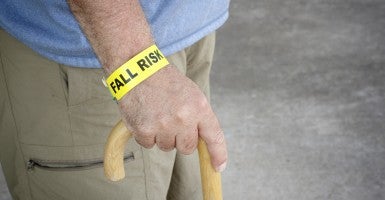HONOLULU—Take careful steps.
When possible, stay in your seat and, by all means, grab hold of that railing.
Simple advice, apparently from much simpler times.
These days, however, Hawaii seems compelled to pay someone to offer such ubiquitous and common-sense advice.
Taxpayers will spend $81,000 in 2015 on a new government position—”fall-prevention coordinator,” who will teach Hawaii’s senior citizens, well, how not to fall.
Gov. Neil Abercrombie, D-Hawaii, signed House Bill 2053 into law this week, which creates the new fall prevention and early detection coordinator position within the Department of Health’s Emergency Medical Services and Injury Prevention branch.
The Department of Health already has a volunteer coordinator but believes the full-time position will help Hawaii’s seniors remain healthy, productive and active and—ultimately— ave taxpayers money.
Lawmakers backing the plan note Hawaii’s population of senior citizens grew 116 percent during the past two decades—more than double the national pace of 47 percent. What’s more, Hawaii’s population of people 65 and older is expected to reach 20 percent of the population by 2030.
Some 8,700 of Hawaii’s senior citizens go to the emergency room each year, costing the state $10 million annually in transportation alone. Another $90 million is spent on emergency room and hospital visits for seniors who took serious falls in which they broke their hips or hit their heads, with rehabilitation costs of about another $90 million.
Senate Human Services Committee Chair Suzanne Chun Oakland said no nonprofit or private entity could coordinate fall prevention in the state with the authority of the state government.
Stanley Michaels Jr., 73, an employee with the state Department of Health, is the state’s part-time, volunteer falls prevention coordinator.
Michaels, who took a bad fall himself leading to a hip replacement, gives presentations to seniors and caregivers, recommending seniors get their vision checked annually and review all medication side effects with a doctor or pharmacist; “safety proof” their homes by removing clutter, extension cords, throw rugs or items on the floor; exercise; and carry an electronic monitoring device.































